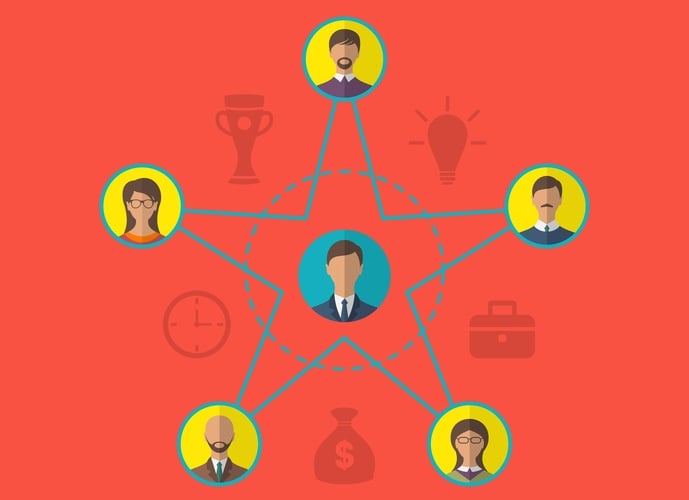Here Are the Benefits of Inclusion and How to Create an Inclusive Culture
Creating an inclusive organizational culture is challenging but extremely advantageous. Here's why and how.

Organizations with inclusive cultures are two times as likely to meet or exceed financial targets, three times as likely to be high-performing, six times more likely to be innovative and agile, and eight times more likely to achieve better business outcomes.
These benefits are the reason 71 percent of organizations aspire to have an "inclusive" culture in the future. Yet many organizations are only still aspiring and have not made significant strides to cultivate an inclusive culture.
Organizational culture change is a steep challenge. Resistance is especially likely when the objective is to create more inclusion. However, the business benefits and the outcomes of an inclusive organization--fairness and respect, value and belonging, safe and open, and empowerment and growth--should be compelling enough to push forward.
5 Ways to Create an Inclusive Culture
1. Understand how diversity and inclusion definitions vary across generations
Generation X and Baby Boomers tend to define diversity along the traditional lines of gender, race, and ethnicity. While Millennials typically define diversity beyond demographics, viewing cognitive diversity and an individual's variety of experiences and perspectives at the core of diversity. Millennials also view inclusion as fundamental to the way a company does business, more so than previous generations. (Read this to learn why a generationally diverse workforce is better equipped to respond to today's high-flux and disruption-prone marketplace.)
While demographic and social identities are important, the ultimate competitive advantage of diversity and inclusion lies in diversity of thought or the cognitive diversity of the organization. Cognitive diversity creates a wellspring of creatively, enhancing innovation by 20 percent and reducing risk by 30 percent. In addition, defining diversity and inclusion in the broader context of cognitive diversity is likely to accelerate the organization's adoption of the inclusion initiatives.
2. Recruit without bias
It's critical to measure diversity and inclusion in all talent practices, but conscious and unconscious biases seem most glaring throughout the recruiting process. BMO Financial Group, a top North American bank, recently recognized the many business impacts of unconscious bias and decided to map where there was high managerial discretion in the recruitment and promotion process.
Through their efforts, BMO Financial Group discovered that managers who were making hiring decisions at the end of the day when they were likely rushed or tired, were more likely to select a candidate that was similar to them or their existing team. Consider using analytics to identify patterns of bias and then leverage some of today's new technologies to de-bias the recruiting and hiring process.
3. Offer inclusion training
Training that gains commitment from managers and equips them to lead inclusion conversations is critical. BMO Financial Group provides e-learning modules, an online hub, and one-page handouts that concisely convey key diversity and inclusion points. Theses resources also equip managers to identify different types of bias and how to handle them. (Read this to learn the six steps leaders can take to be inclusive leaders.)
4. Openly talk about varying inclusion topics
Voluntary employee-led groups with shared characteristics or life experiences--commonly known as Employee Resource Groups (ERGs) or affinity groups--are useful for many companies since they provide (safe environments to have open dialogue and provide a helpful source to hear from diverse group sets.
I recently interviewed Erica Volini, U.S. Human Capital Leader for Deloitte Consulting, where she mentioned how Deloitte is going beyond ERGs. Volini stated, "The emerging generations don't want to be pigeon hold into one group or the other but want to be part of the larger group." Deloitte is reimagining inclusion by creating "inclusion councils" that give employees the opportunity to talk more openly about what their thoughts, priorities, identities, struggles, etc. "The role of the organization is to provide the environment and the opportunity," says Volini. The inclusion councils are self-selecting and address relevant topics like challenges with aging parents, work-life balance, leading and contributing as an introvert, and autism. The inclusion council provides safe and informative environments where different people get to openly talk and understand each other in a whole new way.
5. Gain leadership commitment
Get leaders involved. Creating an inclusive organization must be a priority for an organization's top leadership. Consensus must be built through open conversation, understanding the benefits of inclusion, and connecting diversity and inclusion with the business strategy. Once top leadership has consensus, middle managers must be involved and equipped.
As a generations keynote speaker and trainer, I help companies leverage generational diversity as a competitive advantage. If you'd like to have me speak at your next event, click here.

